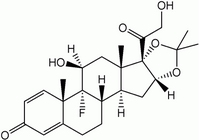Treatment strategies for patients with asthma and chronic obstructive pulmonary disease (COPD) include the use of inhaled corticosteroids. These inhaled agents have been shown to reduce inflammation, improve symptoms, and reduce exacerbations in patients with asthma or COPD. Adverse effects of inhaled corticosteroids include adrenal suppression, accelerated bone mineral loss, easy bruisability, cataract formation, glaucoma, and oral thrush; however, these effects tend to be minimal and acceptable. Previous studies on the impact of inhaled corticosteroids on adrenal function have followed subjects for only 12 months or less, have involved patients with asthma who received oral corticosteroids for acute exacerbations, and have tended to include younger patients. None of these studies examined the impact of these medications on older adults. Eichenhorn and associates conducted a study to determine the long-term effect of inhaled corticosteroid therapy on adrenal function in patients with COPD over a three-year period.
Participants in the study were randomly assigned to receive 1,200 mcg per day (six puffs twice daily) of inhaled triamcinolone or placebo. The inclusion criteria were age between 40 and 69 years, forced expiratory volume in one second (FE[V.sub.1])/forced vital capacity (FVC) ratio of less than 0.70, and an FE[V.sub.1] of 30 to 90 percent of predicted. Serum cortisol levels were drawn before 10 a.m. at study entry. Participants then received 0.25 mg of cosyntropin intravenously or intramuscularly, with repeated determinations of cortisol levels at 30 and 60 minutes. These levels were determined again one and three years after the baseline levels were obtained.
A total of 221 patients were enrolled in the study, with 106 assigned to receive triamcinolone and 115 assigned to receive placebo. There was no significant difference in basal morning cortisol level or response to cosyntropin stimulation between the active medication and placebo groups at baseline or at year 1 or year 3.
Patients who met the criteria for good compliance with the treatment regimen had no significant changes in cortisol levels during the study compared with those receiving placebo. Adherence to the regimen was measured by weighing the used canisters to determine if the participants used six or more puffs per day. When the good-adherence group was compared with the placebo group, there was no significant difference in the various cortisol measurements between the two groups.
The authors conclude that there is no evidence that long-term use of 1,200 mcg of inhaled triamcinolone suppresses either basal or stimulated adrenal function in older patients with COPD. They add that this dosage of triamcinolone does not suppress patients' ability to develop a stress response. The authors caution that this study examined only the use of inhaled triamcinolone, and the results may not be extrapolated to other inhaled corticosteroids.
Eichenhorn MS, et al. Lack of long-term adverse adrenal effects from inhaled triamcinolone. Lung Health Study II. Chest July 2003;124:57-62.
COPYRIGHT 2004 American Academy of Family Physicians
COPYRIGHT 2004 Gale Group



